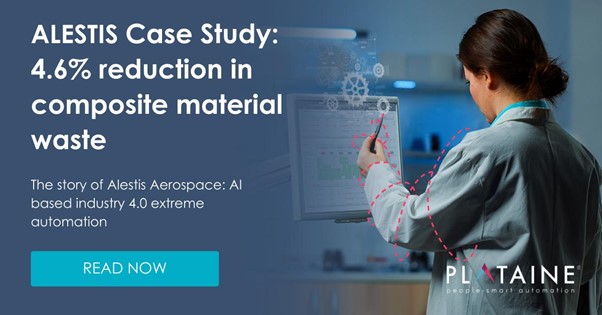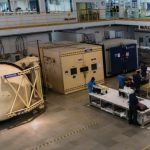Glossary
Manufacturing simulation
Manufacturing simulation is a powerful technique that utilizes computer-based models to mimic and analyse the behaviour of manufacturing processes. It involves creating a virtual representation of a manufacturing system to simulate real-world scenarios, predict outcomes, and optimize various aspects of the production process. In this glossary, we will explore the concept of manufacturing simulation, its significance in modern industry, and the benefits it offers to manufacturers.
What is Manufacturing Simulation?
Manufacturing simulation refers to the use of advanced computer software to model and simulate manufacturing processes, systems, and operations. The software used for this purpose is known as manufacturing simulation software. It allows engineers, production managers, and decision-makers to create a virtual environment that replicates the actual manufacturing facility.
The simulation process involves creating digital models of machines, workstations, materials, and products to analyze their interactions and performance under different conditions. By using mathematical algorithms and statistical methods, manufacturers can obtain valuable insights into the production process, identify bottlenecks, optimize resource allocation, and improve overall efficiency.
Benefits of Manufacturing Simulation
Manufacturing simulation provides several advantages to businesses operating in various industries. Some of the key benefits include:
- Cost Savings: Simulation helps in reducing production costs by identifying and eliminating inefficiencies. It allows manufacturers to test different scenarios and process changes without incurring any physical costs or disrupting ongoing operations.
- Enhanced Productivity: By analysing and optimizing production workflows, manufacturers can enhance productivity and output levels. Simulation enables the identification of process improvements that lead to streamlined operations and reduced cycle times.
- Resource Optimization: With manufacturing simulation, companies can determine the optimal allocation of resources such as manpower, machinery, and materials. This leads to better resource utilization and minimized waste.
- Risk Reduction: Simulation provides a risk-free environment for experimenting with process changes. Manufacturers can assess the impact of these changes before implementing them in the actual production setting, reducing the risk of costly mistakes.
- Improved Quality: By simulating the manufacturing process, companies can identify potential defects and quality issues early in the design phase. This ensures that products meet quality standards and reduces the likelihood of costly rework.
- Flexibility and Adaptability: Manufacturing simulation allows companies to assess the impact of changing market demands or introducing new products. It aids in adjusting production processes to accommodate changes effectively.
- Shorter Time to Market: By optimizing processes and improving efficiency, simulation helps in reducing product development and production time, enabling faster time-to-market for new products.
Why Use Manufacturing Simulation?
Factory simulation in manufacturing offers numerous advantages that significantly enhance production processes and overall efficiency. First and foremost, factory simulation allows manufacturers to create virtual replicas of their facilities, enabling them to test and optimize various scenarios without any real-world disruptions or costs. This risk-free environment allows for the identification of bottlenecks, inefficiencies, and process improvements, leading to cost savings and improved productivity. Additionally, factory simulation enables companies to make data-driven decisions, optimizing resource allocation and reducing waste. It also plays a crucial role in improving product quality by identifying potential defects and issues early in the design phase. By providing a platform for continuous process improvement and experimentation, factory simulation helps manufacturers stay agile, adaptable, and competitive in today’s fast-paced business landscape. Ultimately, leveraging factory simulation empowers businesses to streamline their operations, reduce time to market for new products, and gain a competitive advantage in the global marketplace.
The use of manufacturing simulation has become indispensable in today’s competitive business landscape mostly due to the following reasons:
Complexity of Manufacturing Processes: Modern manufacturing processes have become increasingly complex, involving intricate interactions between various components. Simulation helps in understanding these complexities and making informed decisions.
Resource Constraints: Manufacturers often face limitations regarding budget and resources. Simulation offers a cost-effective way to experiment and innovate without committing substantial resources.
Continuous Process Improvement: In a dynamic market, companies must continuously improve their processes to stay competitive. Simulation provides a platform to test and validate improvement strategies.
Digital Transformation: As industries move towards digitalization and Industry 4.0 concepts, digital manufacturing simulation becomes a crucial aspect of the overall digital transformation strategy.
Risk Management: Simulation helps in mitigating risks associated with new product launches, process changes, or adopting innovative technologies.
Competitive Advantage: Companies that leverage manufacturing simulation gain a competitive edge by optimizing their operations, reducing costs, and delivering higher-quality products to the market.
Digital twin: Digital twin technology is revolutionizing the manufacturing industry by providing manufacturers with real-time data, predictive analytics, improved collaboration and optimized processes. Digital twins might be a virtual replica of your physical assets, but the outcomes and savings are very real. So whether you’re looking to improve efficiency, reduce downtime, or ensure consistent quality, digital twin technology has a lot to offer.
Conclusion
Manufacturing simulation has evolved into a fundamental tool for industries aiming to enhance their production processes, reduce costs, and achieve higher efficiency levels. The software for manufacturing simulation enables businesses to make data-driven decisions, optimize resource utilization, and innovate with reduced risk. Embracing simulation in manufacturing is a key step towards staying ahead in the rapidly changing industrial landscape and ensuring sustainable growth in the long term.
Learn more
Proactive Intelligence In Manufacturing







